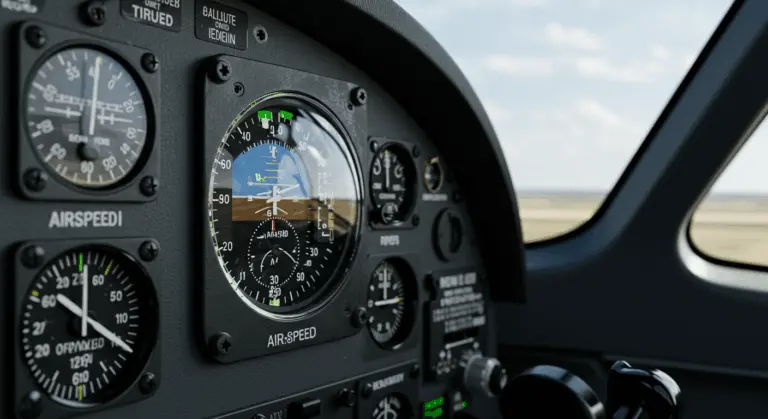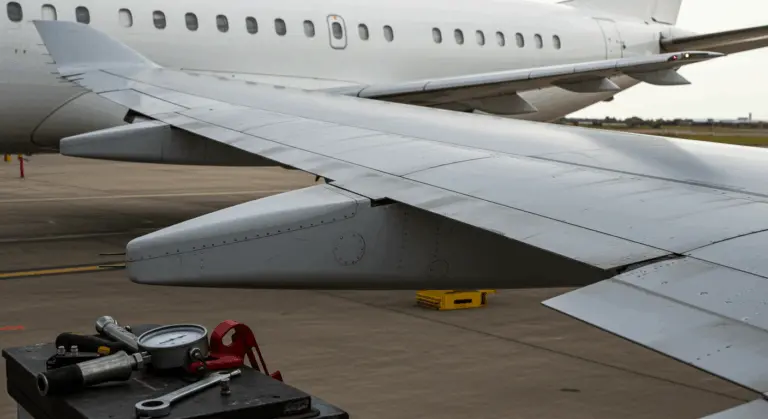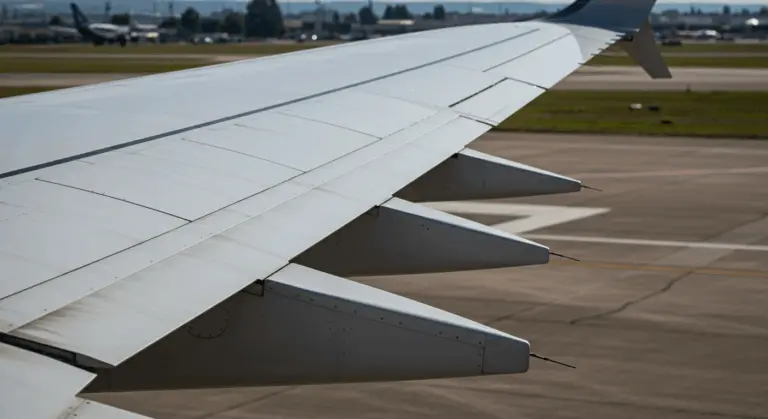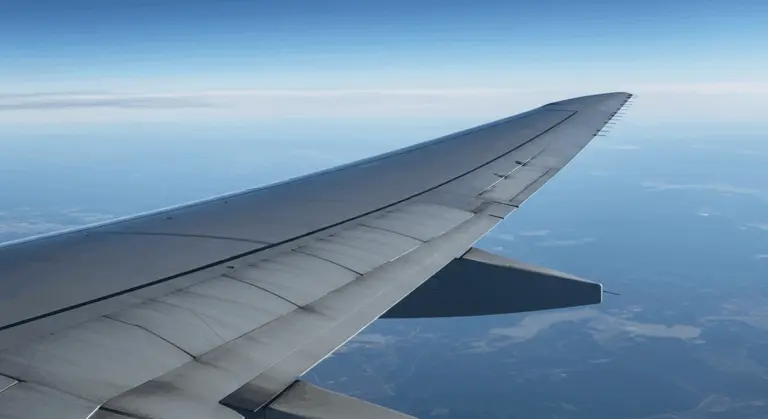Tapered Wing – Characteristics, Advantages, and Applications
Understanding Tapered Wings – Definition and Design
A tapered wing represents a sophisticated evolution beyond traditional rectangular designs, distinguished by its elegant narrowing profile from root to tip. This aerodynamic design maintains crisp, straight leading and trailing edges while gracefully diminishing in width toward the wing tips—creating a distinctive trapezoidal silhouette. The design achieves a practical balance between manufacturing practicality and aerodynamic excellence.
Fundamentally, tapered wings effectively approximate the coveted elliptical platform—the ideal configuration for optimal lift distribution. The elliptical shape allows every section of the wing to reach maximum lift coefficient (CL) simultaneously, resulting in minimal induced drag for a given lift. Yet the sinuous curves of genuine elliptical wings pose formidable manufacturing hurdles. This drives up production costs significantly.
The tapered design provides a practical solution to this challenge. By preserving straight edges while tapering toward the tips, these wings achieve much of the elliptical wing’s aerodynamic benefit while remaining relatively straightforward to manufacture. This versatile approach works brilliantly in both unswept configurations—where the leading edge runs perpendicular to the fuselage—and swept variants that angle gracefully backward, each tailored for distinct performance demands across different flight regimes.
Characteristics of Tapered Wings – Key Features
The trapezoidal platform of a tapered wing offers several key advantages:
Advantages of Tapered Wings – Why They Matter
The primary benefit is A dramatic reduction in induced drag. By tapering gracefully toward the tips, these wings generate significantly weaker wing tip vortices compared to their rectangular counterparts. These vortices—which that form at wing ends—typically account for substantial drag, particularly during low-speed flight or high-lift scenarios. The tapered design reduces these drag-inducing effects, enabling aircraft to maintain peak performance across diverse flight conditions.
Another advantage is the refined lift distribution across the wingspan. Where rectangular wings suffer abrupt lift changes near the tips, tapered wings create a smooth, gradual decrease toward the extremities. This improved distribution directly enhances aerodynamic efficiency by further weakening those troublesome wing tip vortices. The outcome? Aircraft that demand less power to sustain flight—translating into extended range, reduced fuel burn, or increased payload capacity.
From a structural engineering standpoint, tapered wings offer significant advantages. The design enables optimal material placement—robust at the root where structural loads and bending moments are highest, then progressively lighter toward the tips where forces naturally diminish. This graduated architecture creates an inherently stronger structure that withstands flight stresses more effectively while consuming less material. Designers use this property to craft wings that are simultaneously lighter and stronger than constant-chord alternatives—boosting both performance and safety margins.
Tapered wings readily accommodate higher aspect ratios—that crucial relationship between wingspan and average chord length—enhancing their aerodynamic performance. Higher aspect ratios correlate directly with reduced induced drag, particularly beneficial during cruise conditions. This explains why tapered wings are preferred in long-haul airliners, competition gliders, and military platforms where efficiency is critical. The fuel savings achieved through this improved efficiency can be substantial over an aircraft’s operational lifetime.
Beyond efficiency gains, tapered wings provide improved handling characteristics. The diminished wing tip mass reduces rotational inertia around the roll axis, enabling snappier roll rates and more responsive control inputs. This enhanced agility proves invaluable for aircraft demanding precise maneuverability—think fighter jets and aerobatic performers. However, engineers must artfully balance this advantage against tapered wings’ tendency toward tip-first stalling, a characteristic requiring thoughtful aerodynamic profiling throughout the design process.
Applications of Tapered Wings – Where They’re Used
Tapered wings are widely used throughout aviation’s diverse landscape, their exceptional blend of performance and manufacturing practicality making them the go-to choice for countless aircraft categories. Each application leverages specific advantages inherent in the tapered configuration.
Commercial aviation commonly uses tapered wings on modern airliners from industry giants Boeing and Airbus. Flagship models like the Boeing 787 Dreamliner and Airbus A350 showcase high-aspect-ratio tapered wings that reduce drag and maximize fuel efficiency on transcontinental routes—dramatically reducing operational costs while maintaining structural robustness.
Military aviation is another important area where tapered wings excel. Fighter jets such as the legendary F-16 Fighting Falcon employ moderately tapered configurations that effectively balance aerodynamic efficiency with combat agility requirements. The reduced wing tip mass provides improved roll rates and quick responsiveness—critical advantages in aerial combat scenarios. Military transports like the mighty C-17 Globe master III use tapered wings to achieve efficient cruise performance while preserving the structural integrity essential for heavy payloads and operations from challenging airfields.
General aviation commonly uses tapered wing designs to achieve performance benefits for civilian pilots. High-performance singles such as the Cirrus SR22 and the sleek Mooney M20 series feature tapered wings that improve cruise efficiency and refine handling qualities. These designs enable higher speeds and superior fuel economy compared to rectangular wings of equivalent area—making them particularly attractive for cross-country adventures and personal transportation.
The clearest demonstration of tapered wing advantages occurs in glider and sailplane design. Aircraft like the Schneider ASG 29 and Scheme-Hirth Discus boast dramatically tapered wings with extraordinary aspect ratios—sometimes exceeding 30:1. These designs maximize glide ratio, the key measure of glider performance, enabling modern competition gliders to travel over 60 kilometers horizontally for every kilometer of altitude sacrificed. The tapered platform contributes enormously to this remarkable efficiency by virtually eliminating induced drag during thermal soaring and cross-country flights that define competitive gliding.
Unmanned aerial vehicles are an important application area where tapered wings provide distinct advantages. Long-endurance reconnaissance platforms like the General Atomics MQ-9 Reaper use tapered wings to achieve the extended loiter capabilities essential for surveillance missions. The efficiency gains translate directly into increased mission duration or reduced power demands—both invaluable attributes in unmanned systems where operational persistence often determines mission success. As UAV technology continues its rapid evolution, tapered configurations remain prominent in designs prioritizing aerodynamic efficiency and structural optimization.
Comparing Tapered Wings to Other Wing Types
When evaluating aircraft wing architectures, understanding how tapered wings stack up against alternative configurations explains their widespread adoption. Each wing type presents distinct advantages and trade-offs that determine their suitability for specific aviation applications.
Rectangular wings offer design simplicity—featuring constant chord length from root to tip. This uniformity makes manufacturing straightforward and delivers predictable stall behavior, typically beginning at the wing root and progressing outward while preserving aileron effectiveness during stall approach. Yet rectangular wings generate more aggressive wing tip vortices than tapered designs, driving up induced drag. They also suffer from structural inefficiency, as the constant chord fails to match the natural stress distribution where bending moments peak at the root.
Elliptical wings—immortalized by the iconic Supermarine Spitfire—achieve aerodynamic excellence. Their gracefully curved platform creates an ideal elliptical lift distribution that minimizes induced drag for any given wingspan. However, this performance comes at a cost: manufacturing complexity. The continuously varying chord requires sophisticated tooling and construction techniques that increase production time and costs. Moreover, elliptical wings tend toward simultaneous span-wide stalling—potentially creating treacherous handling characteristics without meticulous design intervention.
Swept wings add another dimension to this comparison. While both rectangular and tapered wings can incorporate sweep, this feature becomes particularly potent when combined with tapering. Swept-tapered wings delay compressibility effects at high subsonic and transonic speeds—making them indispensable for jet aircraft. However, sweep introduces complexity, including potential tip stall tendencies and compromised low-speed performance.
Delta wings, with their distinctive triangular profile, deliver outstanding high-speed performance and structural strength but typically struggle with poor low-speed handling and elevated landing speeds. They essentially represent extreme tapering and sweeping merged into a single, dramatic platform.
The tapered wing stands out as the practical choice among these alternatives. It captures roughly 90% of elliptical wing efficiency while maintaining reasonable manufacturing simplicity. Compared to rectangular designs, tapering reduces induced drag by weakening wing tip vortices and better aligns with structural requirements by concentrating material where stress peaks. Unlike aggressive delta configurations, moderate tapering preserves acceptable low-speed characteristics while still delivering improved high-speed performance.
This balance explains tapered wings’ dominance across modern aviation. They deliver approximately 90% of elliptical wing efficiency with dramatically reduced manufacturing complexity. Their predictable performance envelope and structural advantages make them suitable for applications spanning high-performance fighters to efficient commercial transports—showing why this design approach is so widely adopted.
Future of Tapered Wing Designs – Innovations Ahead
Tapered wing technology is experiencing rapid evolution, propelled by several groundbreaking innovations:
For unmanned aerial vehicles and emerging urban air mobility platforms, these tapered wing innovations are especially valuable. These aircraft frequently operate across dramatically varying speed ranges and mission profiles, making adaptive tapered wings especially valuable. The weight reduction and efficiency gains could extend range and endurance substantially while minimizing environmental impact.
Commercial aviation will benefit significantly. Next-generation airliners incorporating advanced tapered wing technologies could achieve fuel efficiency improvements of 20-30% over current designs—significantly reducing both operating costs and carbon emissions. Military applications will likely emphasize performance advantages, with future combat aircraft using adaptive tapered wings to maintain air superiority across diverse mission profiles.
As these technologies transition from laboratory concepts to operational reality, tapered wings will remain at the forefront of aerospace development. Their fundamental strengths—balancing aerodynamic efficiency with structural and manufacturing practicality—ensure continued evolution rather than replacement. Future designs will incorporate advanced materials and adaptive capabilities while preserving their essential character as aviation’s most enduring and successful design approach.







